How To Backup Iphone In Different Drive
Hello! iTunes backup seems to take up a lot of space on my disc C. Could you please help me to change iTunes backup location?
Thanks, George
Do you know, that iTunes backups are done automatically every time you connect your iPhone to iTunes (if you don't have the iCloud Backup option enabled) and sync. These incremental backups are then stored on your PC. iTunes keeps the iOS backup folder directly on the system drive. Such local backups can take up several gigabytes of space on your computer. Therefore, it is better to move iTunes backups to hard drive, for example.
Moreover, iTunes doesn't validate backups . It means that iTunes could make a corrupted backup and after that will make corrupted incremental backups, then it becomes impossible to restore all the other backups. It is better to delete this iPhone backup and make a new backup.
To avoid problems with iTunes backup, I advise you to back up your iPhone with CopyTrans Shelbee .
Advantages of CopyTrans Shelbee:
✔️ Can do full or incremental backup;
✔️ Allows to choose the folder to save backup;
✔️ Validates backup made;
✔️ Compatible with iTunes backup;
✔️ Supports encrypted iPhone backup;
✔️ Can restore full iPhone backup or just some selected data.
Try CopyTrans Shelbee for free
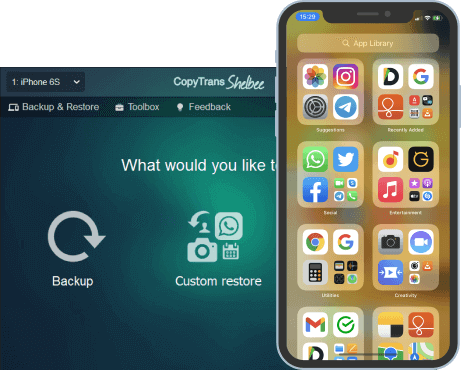
iTunes does not allow to change the backup folder location. What's the solution?
Here is a quick overview of what we are going to cover in this article:
- iTunes backup location
- Where does iTunes store backups on Windows 10, 8, 7
- Where does iTunes store backups on Mac
- Why change iTunes backup location
- ⭐Change iTunes backup location automatically⭐
- Move iTunes backup location – YouTube video
- Manually move the iTunes backup folder (advanced users)
iTunes backup location
iTunes saves backups to a Backup folder and backs up only certain iOS data such as app files, settings and camera roll photos from iPhone, iPad, or iPod Touch each time you sync. The location of the Backup folder depends on the operating system.
To locate iTunes backup folder on Windows 10, 8, 7:
- Find the Search bar:
- In the Search bar, enter %appdata% or %USERPROFILE% (if you downloaded iTunes from the Microsoft Store).
- Press Return.
- Double-click on these folders: "Apple" or "Apple Computer" > MobileSync > Backup.
- In Windows 10: click on the Search bar next to the Start button.
In Windows 8: click on the magnifying glass in the upper-right corner.
In Windows 7: click on Start.
Alternatively, go to: \Users\*Username*\AppData\Roaming\Apple Computer\MobileSync\Backup\.
To locate iTunes backup folder on Mac:
- Click on the magnifier icon in the menu bar.
- Type or copy and paste this: ˜/Library/Application Support/MobileSync/Backup/
- Press Return.
Why change iTunes backup location
It is often unaccounted for how quickly the iOS backup files may accumulate on the system drive and take up valuable system resources ultimately leading to a less than ideal system performance. That's why sometimes the best solution is to change iTunes backup folder location.
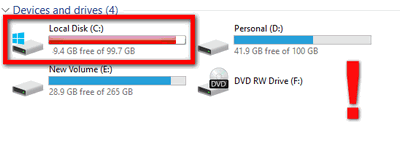
Change iTunes backup location automatically
Use CopyTrans Shelbee to automatically change the location of your iTunes backup folder and move its contents wherever you like. Begin by downloading CopyTrans Shelbee from the following page: Download CopyTrans Shelbee
-
Close iTunes and start CopyTrans Shelbee. Click Toolbox.
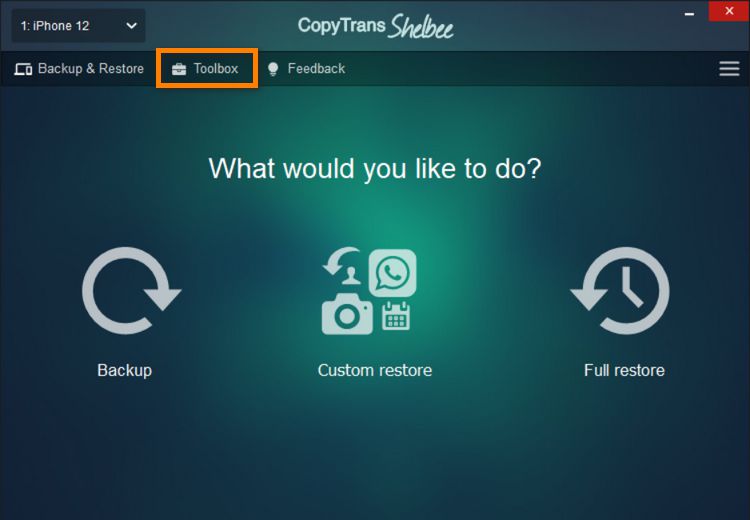
-
Click on the Pencil symbol to choose a new location for your iTunes backup folder.
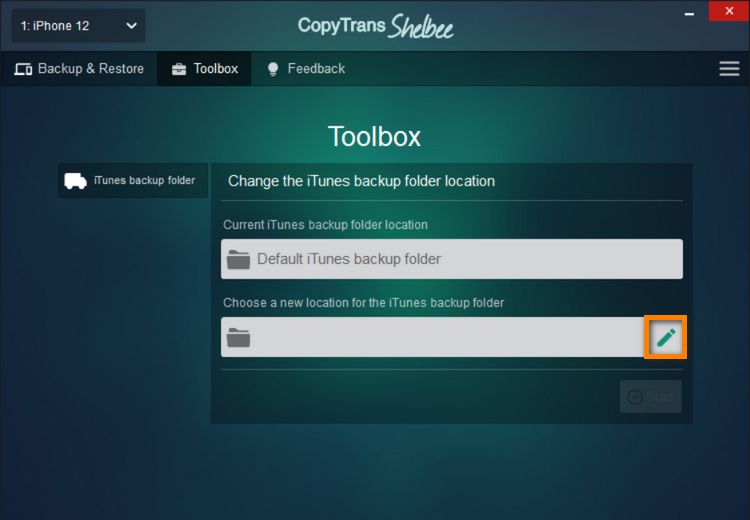
-
Select the folder and click OK.
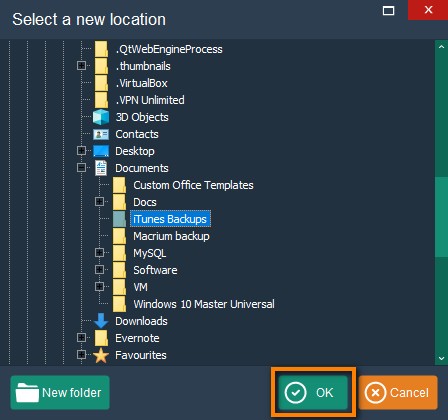
-
Tap Start.
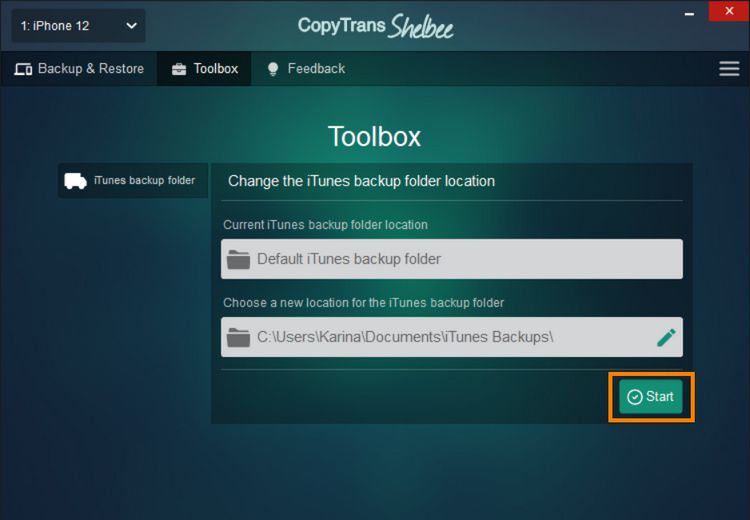
-
Stand by until CopyTrans Shelbee changes the iTunes backup folder to the destination of your choice and moves all folder contents to the new location.
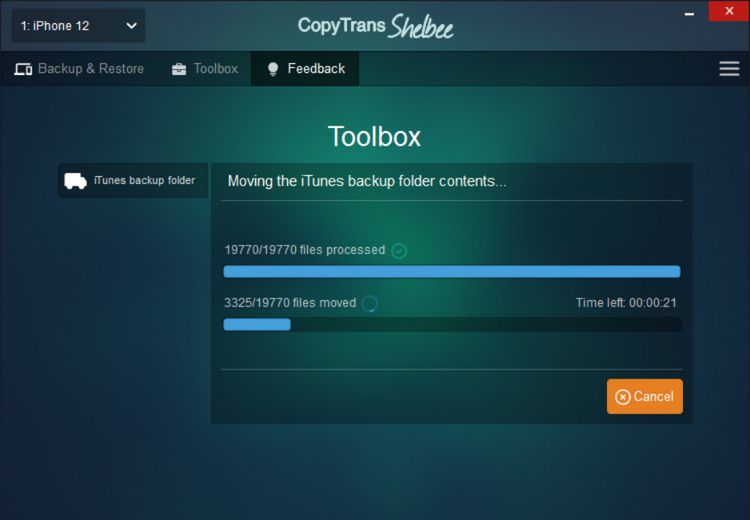
-
That's all! The iTunes location was changed and its contents were successfully moved.
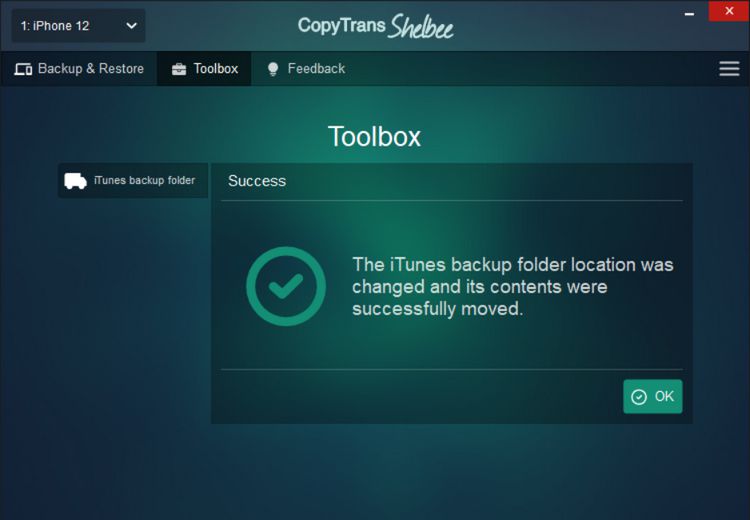
Move iTunes backup location
YouTube tutorial
If you're more of a text person, please see our written instructions above.
Some other marvellous things CopyTrans Shelbee can do:
☑ backup and restore iOS apps;
☑ backup iPhone to any PC folder or to external drive;
☑ validate backups and check for password issues;
☑ restore from iTunes and other local backups.
If you're interested, learn more about CopyTrans Shelbee.
Move the iTunes backup folder
Manually – for Advanced Users
The steps below are intended for advanced Windows users who would like to change the default iTunes backup location.
-
We recommend using the automatic method as the manual method below involves the use of advanced Windows utilities including Command Prompt
-
Please note that the instructions do not work for Windows XP.
-
Locate your current iTunes backup folder. If you are using Windows 10, 8 or 7, use the Windows Start Menu to locate the iTunes backup folder and enter the following in the Search box:
for classic iTunes: %APPDATA%\Apple Computer\MobileSync
for Microsoft Store iTunes: %USERPROFILE%\Apple\MobileSync\Backup
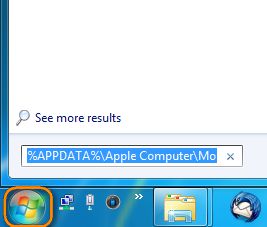
-
Move the current iTunes iOS backup folder to the new desired destination via simple drag-and-drop:
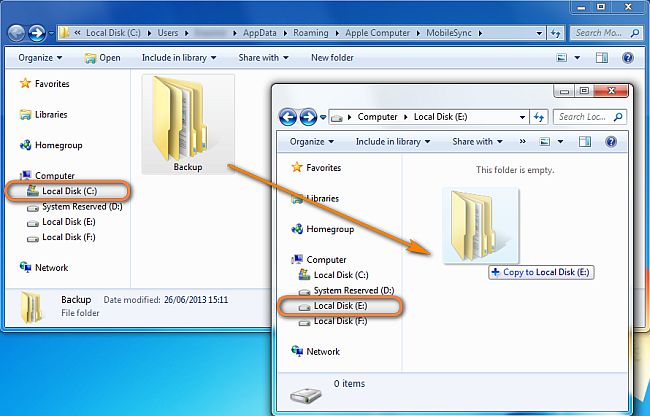
NOTE: Make sure that you have the "Backup" folder fully copied to the new destination drive. Once you do so, you can either delete the "Backup" folder from the original location or rename it to "Backup_OLD". At the end of this guide, you can delete the "Backup_OLD" folder -
At the original folder location, press the SHIFT key, right-click and select Open command window here:
Important: For Windows 10 users choose Open Powershell window here.
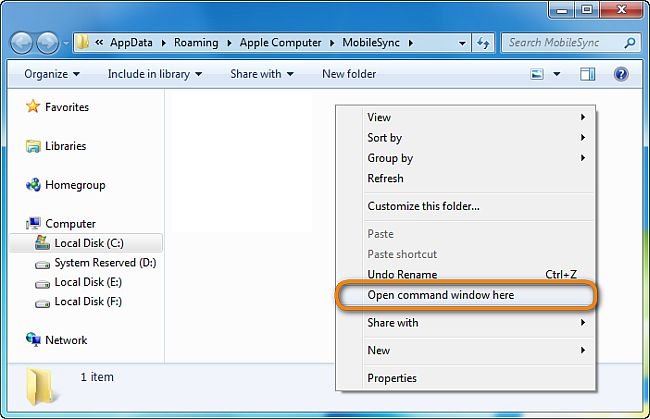
This will open a command window adjusted for that folder:
-
In the command prompt window, manually type in the following command where E:\ is the new drive location (drive letter may vary) and "Backup" is the name of the iOS backup directory you just moved:
for classic iTunes: mklink /J "%APPDATA%\Apple Computer\MobileSync\Backup" "E:\Backup"
for Microsoft Store iTunes: mklink /J "%USERPROFILE%\Apple\MobileSync\Backup" "E:\Backup"

Info: "mklink" is the Windows shell command for adding a symbolic link. The "/J" switch refers to a specific kind of symbolic link called directory junction. Refer to this article to learn more about symbolic links.
-
You will now see the command prompt window return a success in creating a junction

-
A new folder shortcut called "Backup" will appear in the original location:
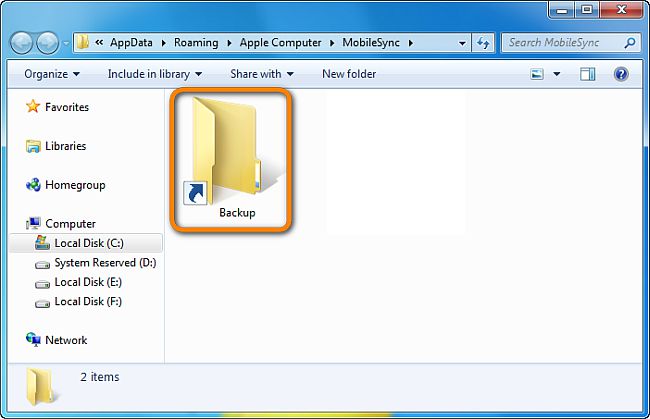
-
Double click on the "Backup" folder shortcut and while it may seem you are still within the MobileSync folder on the C: drive, what you actually see is the contents of the "Backup" folder you previously moved to the new location. You can think of it as a virtual tunnel created through your computer directory space:
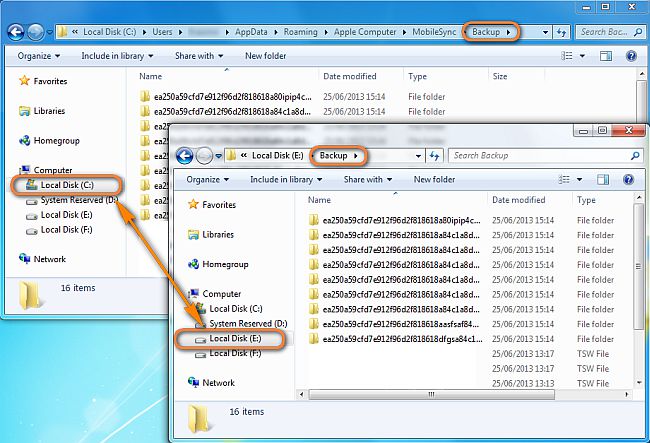
-
That's it. You have now learned how to move iOS backup folder from the primary partition to another drive and, in the process, freed up valuable system space:
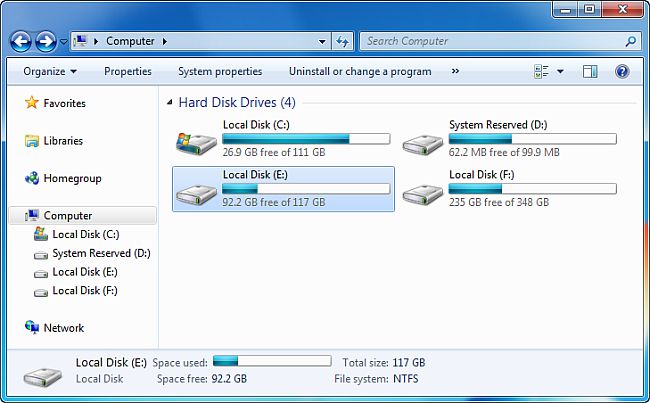
NOTE: If CMD is not showing up with the shift click, go to the MobileSync folder, then type CMD and press Enter in the directory (User>Name>Appdata>Roaming>etc). The CMD prompt should pop up and you can continue through step 6.
How To Backup Iphone In Different Drive
Source: https://www.copytrans.net/support/how-to-change-itunes-backup-location/
Posted by: tatummuccer.blogspot.com

0 Response to "How To Backup Iphone In Different Drive"
Post a Comment